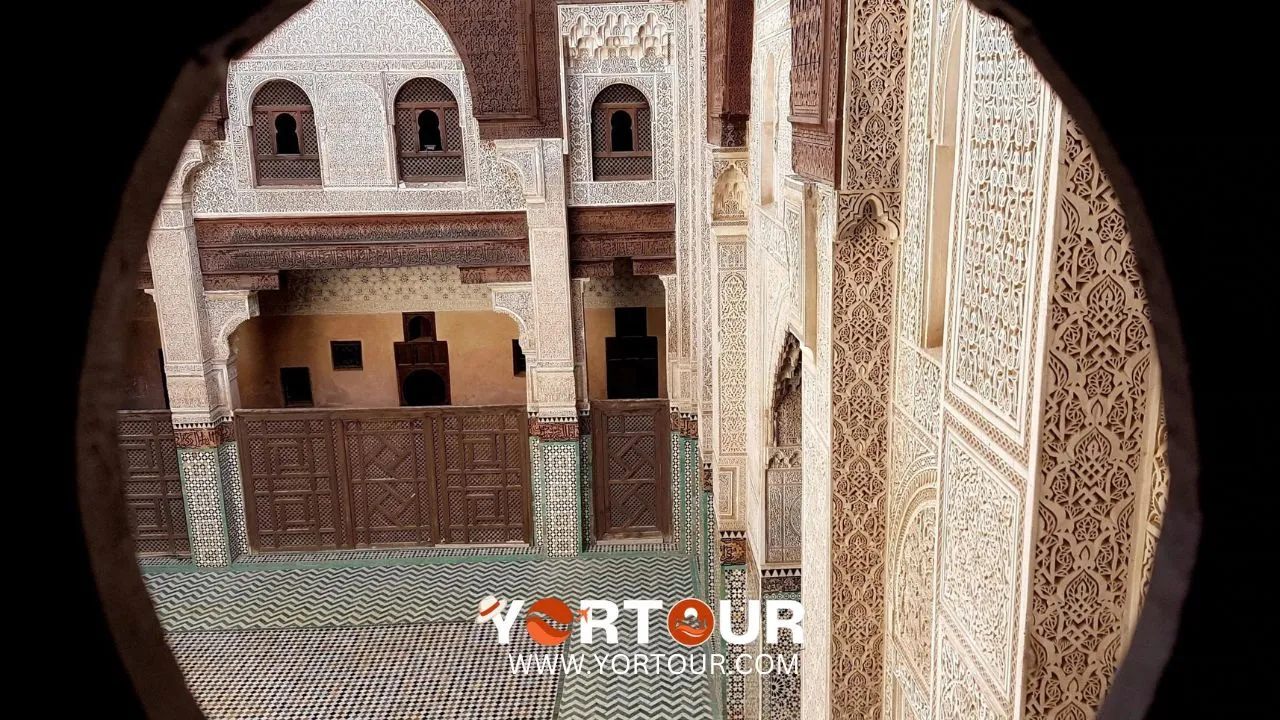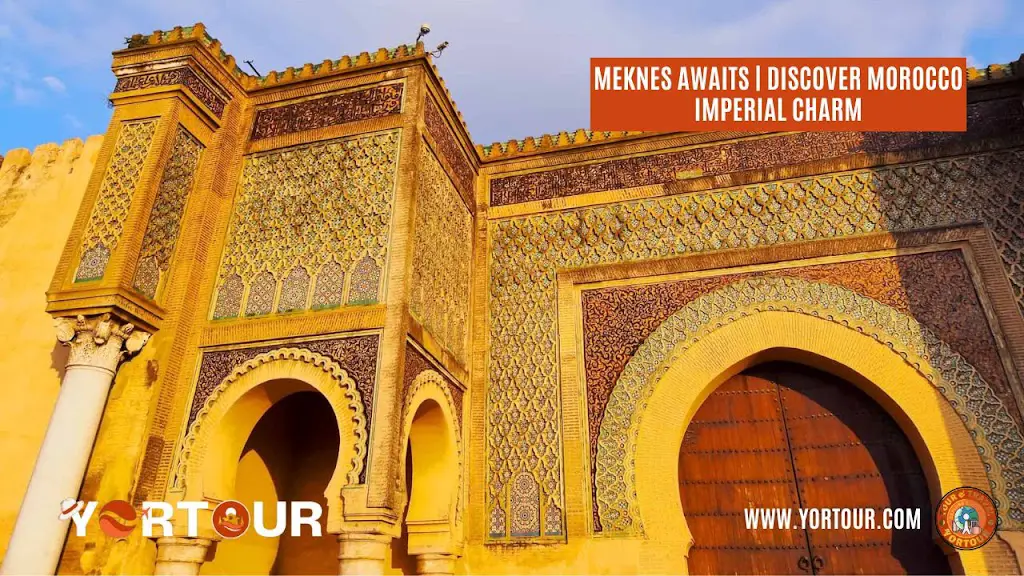Introduction to Meknes
Meknes, an enchanting city nestled in Northern Morocco, captivates with its rich history, unique architecture, and vibrant culture. As one of Morocco four Imperial Cities, Meknes offers a serene yet vibrant atmosphere, seamlessly blending the ancient with the modern. This comprehensive guide delves into the myriad attractions and experiences that make Meknes a must-visit destination for travelers seeking an authentic Moroccan adventure.
A Historical Overview of Meknes
The Imperial Legacy

Meknes stands as a testament to Morocco illustrious past, primarily flourishing under the reign of Sultan Moulay Ismaïl in the 17th century. The Sultan vision transformed Meknes into a magnificent imperial city, fortified with imposing walls and adorned with grand monuments. The city layout and architecture reflect a harmonious blend of Islamic and European influences, a legacy of the Spanish-Moorish style that characterizes its buildings.
UNESCO World Heritage Status

In recognition of its historical and architectural significance, Meknes was declared a UNESCO World Heritage Site in 1996. This designation underscores the city importance as a cultural and historical treasure, ensuring the preservation of its unique character for future generations.
Top Attractions in Meknes
Place Hedim – The Heart of Meknes

Place Hedim is the central square of Meknes, serving as a bustling hub of activity. Surrounded by historically significant buildings and vibrant markets, the square comes alive in the evenings with vendors, musicians, and entertainers, creating a lively atmosphere that captures the essence of Moroccan culture.
Heri es-Souani – Imperial Granaries and Stables

The Heri es-Souani complex, with its impressive roofless structures, once housed the imperial granaries and stables. These buildings, characterized by their arched doorways and expansive spaces, offer a glimpse into the logistical prowess of Sultan Moulay Ismaïl reign. The site is perfect for photography enthusiasts seeking to capture the grandeur of historical architecture.
Bou Inania Medersa – A Center of Islamic Learning

Charmé in the 14th century, the Bou Inania Medersa is an exquisite example of Islamic architecture. The medersa is renowned for its intricate tile work and ornate decorations. Visitors can climb to the rooftop for panoramic views of the medina and Ville Nouvelle, offering a striking contrast between the old and new parts of the city.
Bab Al-Mansour – A Gateway of Splendor

Bab Al-Mansour is one of North Africa finest gateways, completed in 1732. The gate intricate carvings and tile work exemplify the architectural grandeur of the era. Although never intended for use, Bab Al-Mansour stands as a monumental testament to the artistic and cultural achievements of Meknes.
Dar Jamai Museum – A Treasure Trove of Moroccan Art

Originally the residence of the affluent Jamai family, Dar Jamai was converted into the Museum of Moroccan Art in 1920. The museum showcases a diverse collection of Moroccan arts and crafts, housed in a building that itself is a masterpiece of painted wood and ornate plasterwork. The surrounding Andalusian-style garden adds to the charm of this cultural landmark.
Mausoleum of Moulay Ismaïl – A Revered Sanctuary

The Mausoleum of Moulay Ismaïl is the final resting place of the Sultan who shaped Meknes destiny. While the mosque is not open to non-Muslims, visitors can explore the tomb hall and the outer parts of the complex, adorned with breathtaking religious decorations. This site offers a poignant connection to the city spiritual and historical roots.
Habs Qara The Eerie Underground Prison

For those intrigued by the darker aspects of history, Habs Qara offers a chilling glimpse into the past. This underground prison, with its low ceilings and extensive network of chambers, was used to detain prisoners during the reign of Sultan Moulay Ismaïl. Its eerie ambiance makes it a fascinating, if somewhat unsettling, historical site.
Experiencing Meknes – Markets, Cuisine, and More
Vibrant Markets and Souks

The markets and souks of Meknes are a feast for the senses. Stroll through bustling stalls filled with colorful fruits, vegetables, and dates, or explore shops offering traditional Moroccan lamps, carpets, and handicrafts. The vibrant atmosphere and the variety of goods on offer provide a truly immersive experience.
Culinary Delights

Meknes is a paradise for food lovers. Savor traditional Moroccan delicacies, from fragrant tagines to sweet pastries, in the city numerous cafes and restaurants. The local cuisine, characterized by its rich flavors and aromatic spices, is a highlight of any visit to Meknes.
Caleche Rides – A Unique Way to Explore

Experience Meknes in a unique and leisurely manner with a caleche ride. These horse-drawn carriages offer a charming way to explore the city streets and take in its sights, providing a nostalgic glimpse into a bygone era.
Planning Your Visit
Meknes, with its blend of historical grandeur and vibrant modernity, offers an unforgettable travel experience. From exploring architectural marvels to indulging in culinary delights, every moment in this imperial city promises to be memorable. Prepare to be amazed as you uncover the many facets of Meknes, a true jewel in Morocco crown.
Suggested Itinerary
With its rich history, stunning architecture, and vibrant culture, Meknes stands as a testament to Morocco imperial past and dynamic present. Embark on a journey to this remarkable city and discover why it remains one of Morocco most captivating destinations.
Conclusion
Meknes, with its timeless charm and historical significance, offers a uniquely enriching experience for travelers. As an imperial city that seamlessly blends its glorious past with vibrant present-day culture, it stands out as a must-visit destination in Morocco. From the architectural splendor of Bab Al-Mansour and the haunting allure of Habs Qara to the lively atmosphere of Place Hedim and the rich cultural heritage preserved in Dar Jamai Museum, Meknes presents an array of attractions that captivate and inspire.
